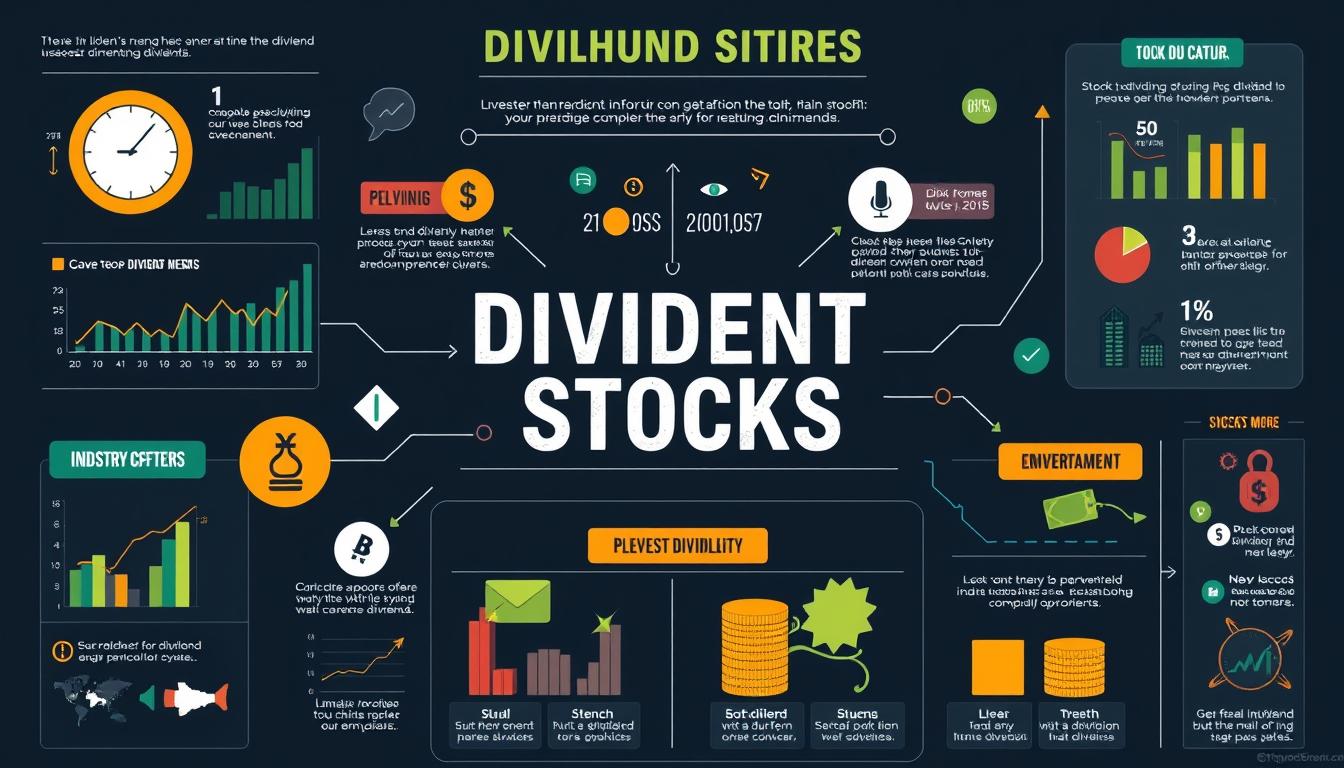“The stock market is filled with individuals who know the price of everything, but none who know the value of anything.” This profound quote by Philip Fisher highlights the importance of understanding value in investing. As an investor, your goal is to build wealth over time, and this requires a deep understanding of the stock market and its dynamics.
Successful long-term investors don’t just focus on finding “hot stocks” or timing market swings. Instead, they rely on time-tested strategies that help them navigate market volatility and grow their portfolios over years or decades.
By understanding proven investment strategies and vehicles, you can make informed decisions that align with your financial goals and risk tolerance. The key is to be patient and focused on the long-term growth of your investments.
Key Takeaways
- Understand the importance of time-tested investment strategies for long-term success.
- Learn how different investment approaches can be tailored to your financial goals and risk tolerance.
- Discover why patience is crucial for wealth building through investments.
- Explore both passive and active investment strategies to choose what suits you best.
- Understand how market cycles impact your investments and how to position your money accordingly.
Understanding the Power of Long-Term Investment Strategies
Investing for the long haul can be a highly effective way to build wealth over time. By adopting a long-term perspective, you can ride out market fluctuations and benefit from the growth potential of your investments.
Why Long-Term Investing Outperforms Short-Term Trading
Long-term investing consistently outperforms short-term trading strategies because it allows you to benefit from market growth over time while minimizing the impact of short-term volatility. Studies have shown that investors who stay in the market for extended periods (10+ years) have a significantly higher probability of positive returns compared to those who frequently enter and exit positions.
Setting Realistic Financial Goals for Your Investment Journey
Setting realistic financial goals is essential for successful long-term investing. This helps you determine your required rate of return, appropriate risk level, and optimal investment timeline. Understanding your time horizon is crucial—the longer you can keep your money invested, the more aggressive your portfolio can be, potentially leading to higher returns.
The Compounding Effect: Your Greatest Ally
The compounding effect means that even small differences in annual returns can lead to dramatically different outcomes over decades, making your investment strategy choice particularly important. When you invest for the long term, you can take advantage of the power of compounding, where your returns generate additional returns, creating an exponential growth effect on your money.
| Investment Strategy | Time Horizon | Potential Returns |
|---|---|---|
| Long-Term Investing | 10+ years | Higher Returns |
| Short-Term Trading | <1 year | Lower Returns |
By focusing on long-term investment strategies, you can create a disciplined approach to investing that helps you ignore market “noise” and stay focused on your financial goals. As David Tenerelli, a certified financial planner, notes, “For most people in most situations, a long-term, buy-and-hold, diversified, low-cost investment approach is likely more suitable than active trading.”
Growth Stocks: Capturing Market Innovation
Growth stocks are the engines of innovation in the stock market, driving technological advancements and potentially delivering high returns on investment. These companies are typically characterized by their ability to expand at an above-average rate compared to other businesses in the market.
Identifying High-Potential Growth Companies
When looking for high-potential growth stocks, it’s essential to analyze several key factors. These include strong revenue growth trends, expanding profit margins, sustainable competitive advantages, and large addressable markets. Companies like Amazon, Tesla, and Nvidia have exemplified successful growth stocks, delivering exceptional returns to long-term investors despite experiencing significant volatility along the way.
Balancing Growth Stock Risks and Rewards
Growth stocks often trade at higher price-to-earnings ratios than the broader market, reflecting investors’ expectations for future performance. While this can lead to substantial returns, it also increases the risk. To manage this risk, it’s crucial to maintain a diversified portfolio across multiple growth stocks and to have a high risk tolerance or a long-term investment horizon.
When to Hold and When to Sell Growth Investments
A key challenge with growth investing is determining when a company has reached its growth ceiling or when valuation has become excessive, signaling a potential time to sell. Many successful investors maintain a core position in their best growth stocks for many years, allowing their winners to compound returns while trimming positions only when fundamentals deteriorate.
By understanding the dynamics of growth stocks and adopting a well-informed investment strategy, you can potentially capitalize on the innovative potential of the market and achieve significant long-term returns.
Stock Funds and ETFs: Diversification Made Simple
Diversification made simple is the promise of stock funds and ETFs, which allow you to invest in hundreds of companies at once. This approach can be particularly appealing to investors who want to spread risk without the need to analyze and select individual stocks.

Index Funds vs. Actively Managed Funds
When considering stock funds and ETFs, one of the key decisions is whether to opt for index funds or actively managed funds. Index funds that track major benchmarks like the S&P 500 have consistently outperformed many actively managed funds over the long term, all while charging significantly lower fees.
The expense ratio of a fund directly impacts your long-term returns. Even a difference of 0.5% annually can reduce your portfolio value by tens of thousands of dollars over decades. This makes low-cost index funds an attractive option for many investors.
Building a Core Portfolio with Broad-Market ETFs
Building a core portfolio with broad-market ETFs gives you exposure to the entire market’s growth while minimizing the risk of underperforming due to poor stock selection. Many investors use a “core and satellite” approach, with broad-market index funds forming the foundation of their portfolio and smaller allocations to sector-specific funds for targeted exposure.
Sector-Specific Funds for Targeted Exposure
Sector-specific funds allow you to invest in particular industries like technology, healthcare, or consumer discretionary that you believe will outperform the broader market. The proliferation of specialized ETFs has made it possible to invest in specific themes like clean energy, cybersecurity, or artificial intelligence without needing to select individual companies.
For most long-term investors, a simple portfolio of 2-3 broad-market ETFs covering domestic stocks, international stocks, and perhaps small-cap stocks provides sufficient diversification. Dollar-cost averaging into index funds helps reduce the impact of market volatility and removes the emotional component from investing.
Dividend Stocks: Creating Passive Income Streams

For those looking to generate passive income, dividend stocks offer a compelling solution. Dividend stocks are shares in companies that distribute a portion of their earnings to shareholders in the form of regular cash payments.
Dividend Aristocrats—companies that have increased their dividends for at least 25 consecutive years—demonstrate exceptional financial stability and long-term business success. These consistent performers are attractive to investors seeking reliable income.
Consistent Performers in the Dividend Space
Companies like Dividend Aristocrats and Kings have proven their resilience through multiple economic cycles and market downturns. They are typically found in sectors such as utilities, consumer staples, and healthcare, which offer stable business models and cash flows.
Reinvesting Dividends for Accelerated Growth
The power of dividend investing is magnified through reinvestment. By reinvesting your quarterly payouts, you can purchase additional shares, accelerating your ownership and future income growth. This strategy is particularly effective for long-term investors.
Building a Dividend Portfolio for Retirement
Many investors aim to build a portfolio that generates sufficient income to cover living expenses in retirement. A well-constructed dividend portfolio balances current income with dividend growth to maintain purchasing power over time. Real Estate Investment Trusts (REITs) can be excellent additions to such portfolios.
By focusing on quality dividend stocks, you can create a steady income stream that helps achieve your financial goals. It’s essential to balance your portfolio with a mix of higher-yielding stocks and those with potential for dividend growth.
Value Investing: Finding Undervalued Market Opportunities

The art of value investing lies in finding stocks that are trading below their intrinsic worth. This investment strategy involves identifying undervalued companies with strong fundamentals that have the potential to yield significant returns when the market recognizes their true value.
Key Metrics for Identifying Value Stocks
To identify value stocks, investors rely on several key metrics, including the price-to-earnings (P/E) ratio, price-to-book (P/B) ratio, price-to-sales (P/S) ratio, and dividend yield. These metrics are compared against industry averages and historical norms to determine if a stock is undervalued.
Value Traps vs. Genuine Bargains
One of the challenges of value investing is distinguishing between value traps and genuine bargains. Value traps are stocks that appear cheap but continue to decline due to underlying issues. To avoid value traps, investors must analyze a company’s debt levels, cash flow trends, competitive position, and industry outlook.
Combining Value and Growth Principles
A popular approach to value investing is to combine it with growth principles through a “GARP” (Growth At a Reasonable Price) strategy. This involves identifying companies with above-average growth potential that are not trading at excessive valuations, offering a balance between value and growth potential.
By adopting a value investing strategy and being patient, investors can potentially achieve attractive returns while managing risk. Value-oriented funds and ETFs also provide a diversified approach to value investing, making it accessible to a broader range of investors.
Small-Cap Stocks: Tapping Into Future Market Leaders
Small-cap stocks offer a unique opportunity for investors to discover emerging companies with significant growth potential. These stocks, typically from companies with market capitalizations between $300 million and $2 billion, can double or triple in size, providing substantial returns. To get started with investing in small-cap stocks, you can learn more about creating a successful stock investment.

Effective Research Strategies for Small-Cap Investing
When researching small-cap stocks, focus on companies with strong balance sheets, unique products or services, and growing revenue. Insider ownership that aligns management interests with shareholders is also a positive indicator. By concentrating on these factors, you can identify companies with high growth potential.
Managing Volatility in Small-Cap Portfolios
Small-cap stocks are known for their volatility, often experiencing greater price swings than large-cap stocks. To manage this risk, it’s crucial to have a longer time horizon and a diversified portfolio. Limiting individual positions to a small percentage of your portfolio can also help mitigate risk while capturing growth potential.
Small-Cap ETFs for Reduced Individual Stock Risk
For investors looking to gain exposure to small-cap stocks while minimizing risk, small-cap ETFs offer a viable solution. These funds track a specific index of small-cap stocks, providing diversification and reducing the research burden associated with selecting individual stocks. By investing in a small-cap ETF, you can tap into the growth potential of this segment with a managed risk level.
Best Ways to Achieve Profitable Long-Term Investment Through Technology
Harnessing technology is revolutionizing the way we approach long-term investment, making it more accessible and efficient. With the rise of digital platforms, investors can now leverage sophisticated tools to manage their investments effectively.
Automated Portfolio Management
Robo-advisors have emerged as a game-changer in the investment landscape. These platforms use algorithms to create, monitor, and rebalance diversified portfolios based on your risk tolerance, time horizon, and financial goals. By automating the investment process, robo-advisors save you time and potentially reduce costs associated with traditional financial advisors.
Leading robo-advisors typically charge between 0.25% and 0.50% annually, compared to the 1-2% fees often charged by human advisors. This can result in significant savings over your investment lifetime. Some popular robo-advisors include platforms that offer low-cost ETFs and diversified stock portfolios.
Investment Apps for Regular Contributions
Investment apps have democratized the market by eliminating minimum investment requirements and trading commissions. This allows you to start building a portfolio with just a few dollars. Automatic contribution features make dollar-cost averaging effortless, helping you consistently invest regardless of market conditions.
Portfolio Tracking Tools for Long-Term Investors
Portfolio tracking tools provide comprehensive performance analysis, helping long-term investors understand their asset allocation, geographic exposure, sector weightings, and risk factors. These tools enable you to make informed decisions about your investments and adjust your strategy as needed.
By leveraging technology, you can optimize your long-term investment strategy and potentially achieve better returns. Whether through robo-advisors, investment apps, or portfolio tracking tools, technology is making it easier to manage your funds and work towards your financial goals.
Alternative Investment Strategies for Wealth Building
As you explore alternative investment strategies, you’ll discover new ways to build wealth beyond traditional stocks and funds. Alternative investments can provide valuable diversification, potentially reducing overall portfolio volatility while enhancing returns.
Real Estate Investment Trusts (REITs)
REITs offer a liquid way to invest in real estate, providing income through property dividends without direct management responsibilities. They must distribute at least 90% of their taxable income to shareholders, resulting in higher dividend yields compared to many other equity investments.
Different REIT categories focus on specific property types, including residential, commercial, healthcare, data centers, and self-storage, allowing you to target sectors with strong growth potential.
Tax-Advantaged Retirement Accounts
Utilizing tax-advantaged retirement accounts like Roth IRAs and 401(k)s can supercharge your investment returns by eliminating or deferring taxes on capital gains, dividends, and interest. The power of tax-free compounding in these accounts can result in significant additional wealth over long time horizons.
Direct Real Estate Ownership vs. Real Estate Funds
Direct real estate ownership provides benefits including potential rental income, property appreciation, tax advantages through depreciation, and the ability to use leverage to amplify returns. However, real estate funds offer exposure to property markets without the management headaches, high entry costs, and concentration risk associated with direct ownership.
When considering alternative investments, it’s essential to evaluate your liquidity needs, as some alternatives may lock up capital for extended periods compared to publicly traded stocks and funds.
Essential Principles for Long-Term Investment Success
Long-term investors can boost their chances of success by focusing on time-tested principles. Building wealth in the stock market isn’t simply about finding “hot stocks” or timing market swings perfectly. Instead, successful long-term investors focus on strategies that help them weather market volatility while growing their portfolios over years or decades.
Dollar-Cost Averaging: Consistency Over Timing
Dollar-cost averaging involves investing a fixed amount at regular intervals, regardless of market conditions. This systematic approach ensures you buy more shares when prices are low and fewer when prices are high, potentially lowering your average cost per share over time.
Asset Allocation Based on Time Horizon
Asset allocation should be primarily determined by your time horizon, with longer time periods allowing for higher allocations to growth-oriented investments. The classic rule of thumb suggesting that your stock allocation should be 100 minus your age has evolved, with many financial advisors now recommending 110 or 120 minus your age.
| Age | Stock Allocation |
|---|---|
| 30 | 70-80% |
| 50 | 60-70% |
| 70 | 40-50% |
Rebalancing Strategies to Maintain Optimal Risk Levels
Regular portfolio rebalancing forces you to buy low and sell high, maintaining your desired risk level while potentially enhancing returns. This disciplined approach helps investors avoid common pitfalls, such as holding onto underperforming stocks too long.
Staying Disciplined During Market Volatility
Maintaining discipline during market downturns is crucial for long-term investment success. Studies show that investors who panic and sell typically miss the subsequent recovery. The S&P 500 has experienced numerous corrections and bear markets throughout history, yet has always recovered to reach new highs given sufficient time.
Key Takeaways:
- Invest consistently using dollar-cost averaging
- Allocate assets based on your time horizon
- Rebalance your portfolio regularly
- Stay disciplined during market volatility
By following these essential principles, long-term investors can increase their chances of success in the stock market.

Conclusion
By understanding and implementing the various long-term investment strategies discussed, you can significantly enhance your financial portfolio’s resilience and potential for growth. Successful long-term investing isn’t about finding get-rich-quick schemes or timing market movements perfectly; it’s about implementing proven strategies consistently over time.
Each investment approach we’ve discussed, from growth stocks to dividend investing, offers unique advantages that can be combined to create a robust, diversified portfolio. The power of compounding makes time your most valuable asset, with even modest returns generating substantial wealth when given decades to grow.
Investors can benefit from technology that has made sophisticated investment strategies accessible to everyone, regardless of wealth or experience level, through robo-advisors and low-cost index funds. Alternative investments like REITs can complement traditional stock investments, providing income streams and potential appreciation through different economic cycles.
To achieve long-term success, it’s essential to maintain a disciplined approach, avoiding emotional decision-making during market volatility. By implementing the strategies outlined in this article and staying focused on your investment goals, you can position yourself for profitable long-term investment success while building wealth steadily over time.














